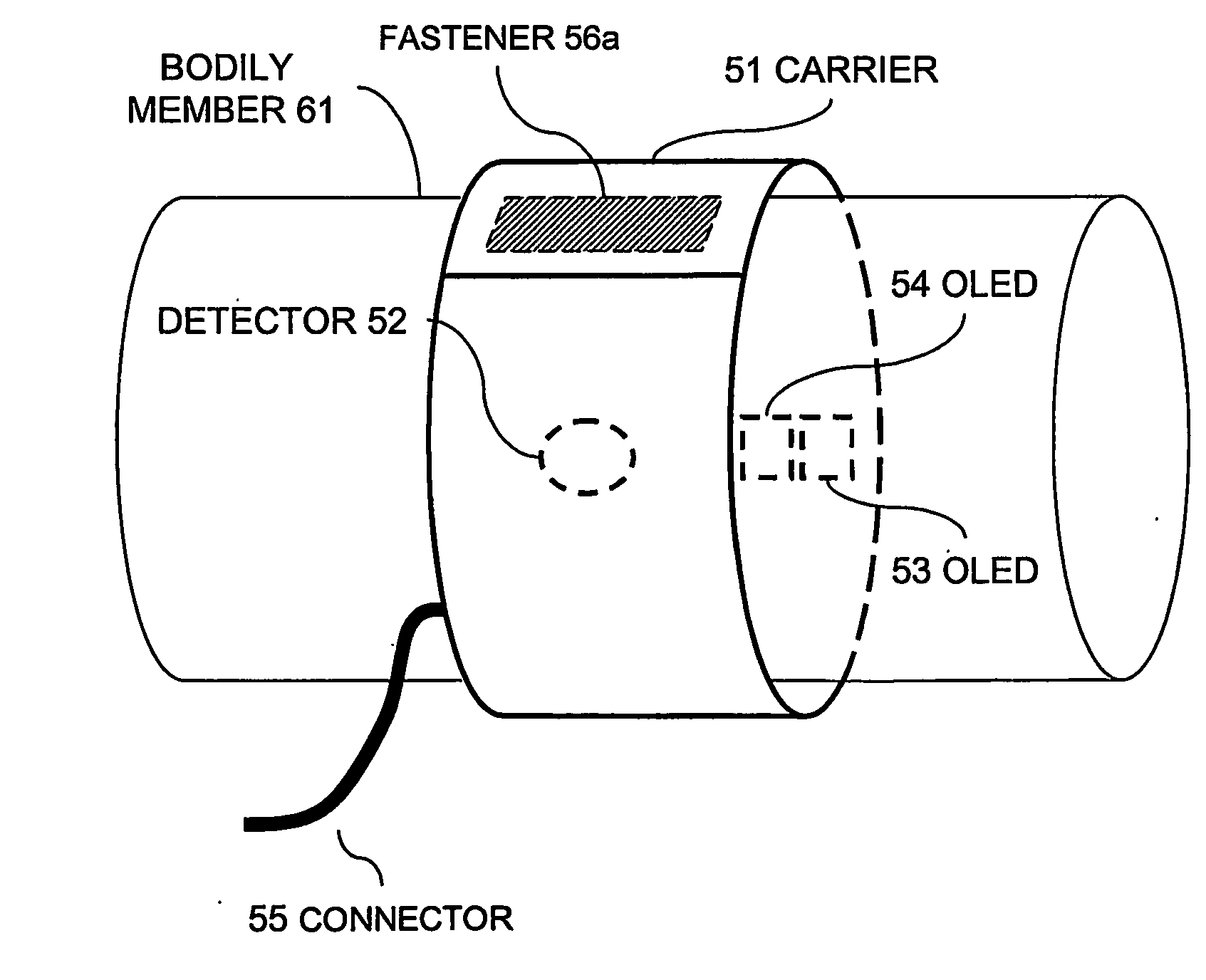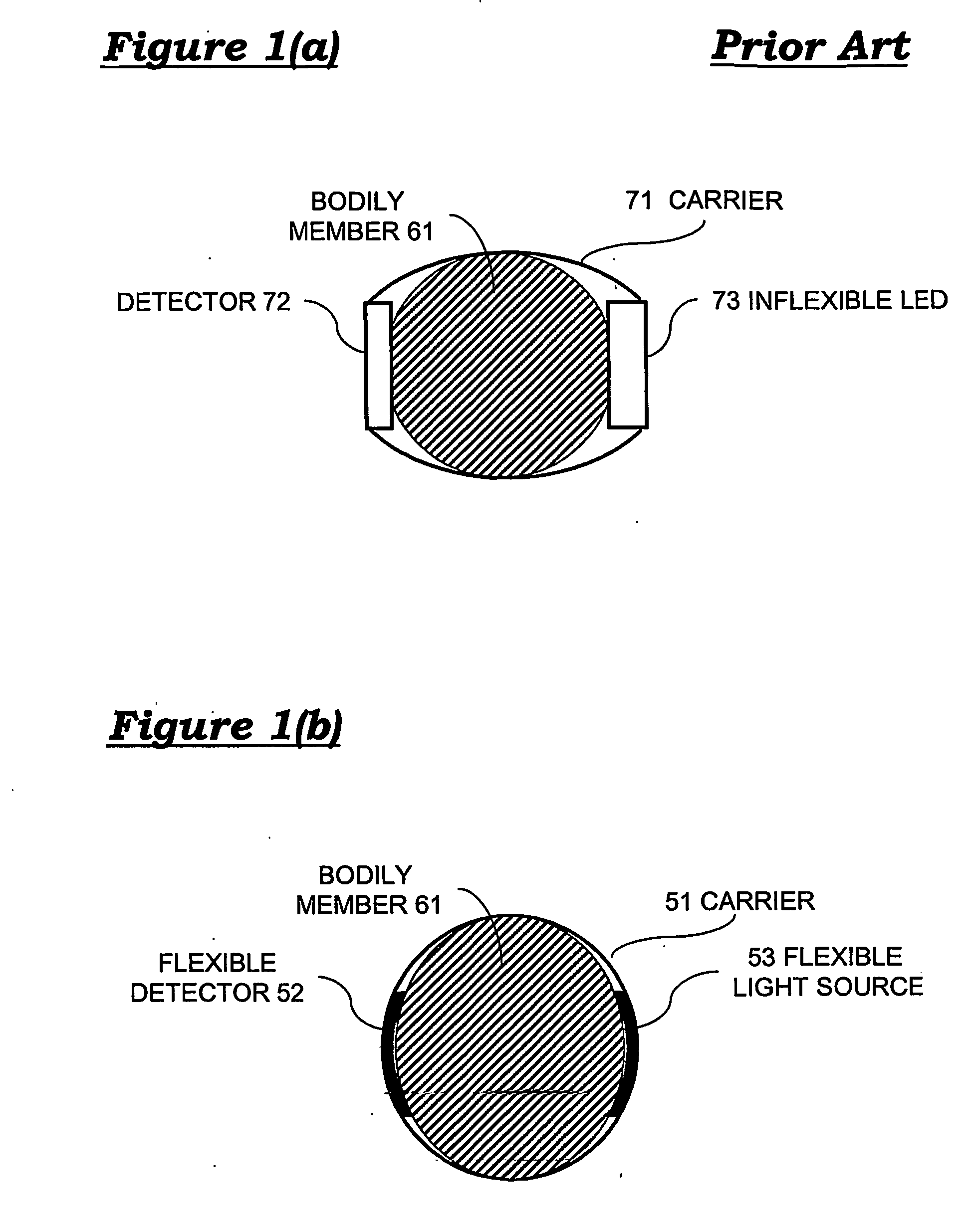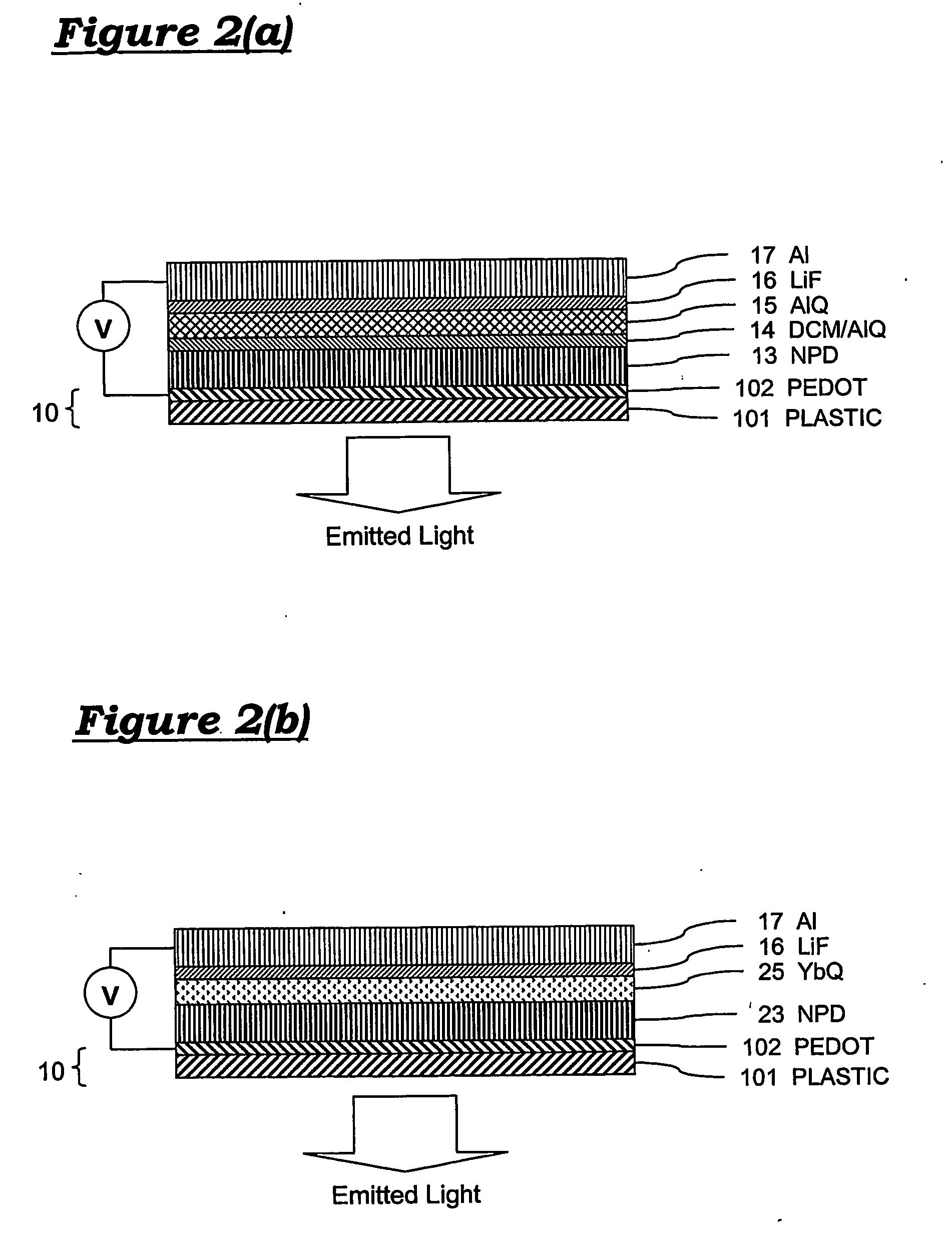Flexible light sources and detectors and applications thereof
a light source and flexible technology, applied in the field of optoelectronic devices, can solve the problems of limiting the curvature of the sensor device, affecting the optical contact between the sensor components and the patient's skin, and affecting the patient's health,
- Summary
- Abstract
- Description
- Claims
- Application Information
AI Technical Summary
Benefits of technology
Problems solved by technology
Method used
Image
Examples
Embodiment Construction
[0077] The present inventors have identified that the use of flexible LEDs (for example organic LEDs or polymer based light sources, formed upon flexible substrates) as medical light sources offers many advantages over known light sources for diagnostic and therapeutic purposes.
[0078] Referring to FIG. 2(a), a first embodiment of a flexible organic light emitting diode is formed upon a plastic substrate 10, which may be approximately 50 mm long and 13 mm wide. ORGACON™ flexible substrate (AGFA) may be used. ORGACON is a commercially available PET (Poly Ethylene Terephthalate) film 101 coated with a conductive polymer (PEDOT / PSS—Polyethylene-Dioxythiophene in Polystyrenesulphonic acid) 102. Several varieties of ORGACON are available, of which a preferred variety provides a substrate which is 125 microns thick and has sheet resistance of 350 ohms / square. The OLED is formed upon the substrate by forming successive layers as follows.
[0079] Further layers are then evaporated onto the f...
PUM
 Login to View More
Login to View More Abstract
Description
Claims
Application Information
 Login to View More
Login to View More - R&D
- Intellectual Property
- Life Sciences
- Materials
- Tech Scout
- Unparalleled Data Quality
- Higher Quality Content
- 60% Fewer Hallucinations
Browse by: Latest US Patents, China's latest patents, Technical Efficacy Thesaurus, Application Domain, Technology Topic, Popular Technical Reports.
© 2025 PatSnap. All rights reserved.Legal|Privacy policy|Modern Slavery Act Transparency Statement|Sitemap|About US| Contact US: help@patsnap.com



